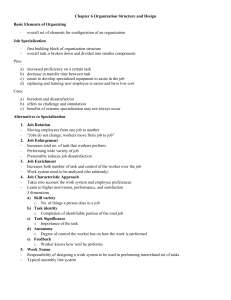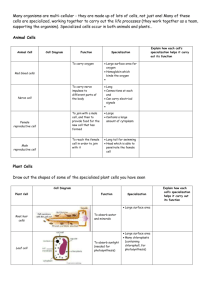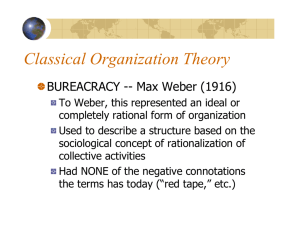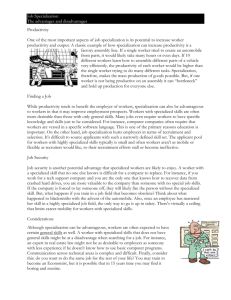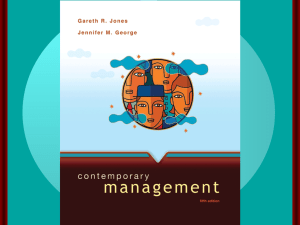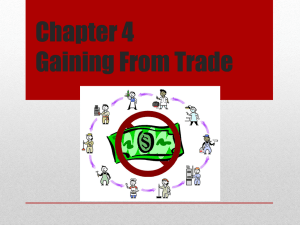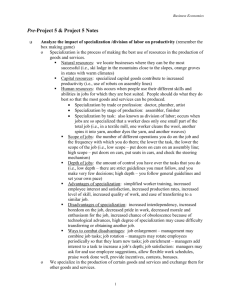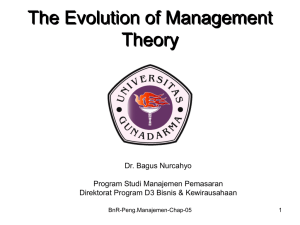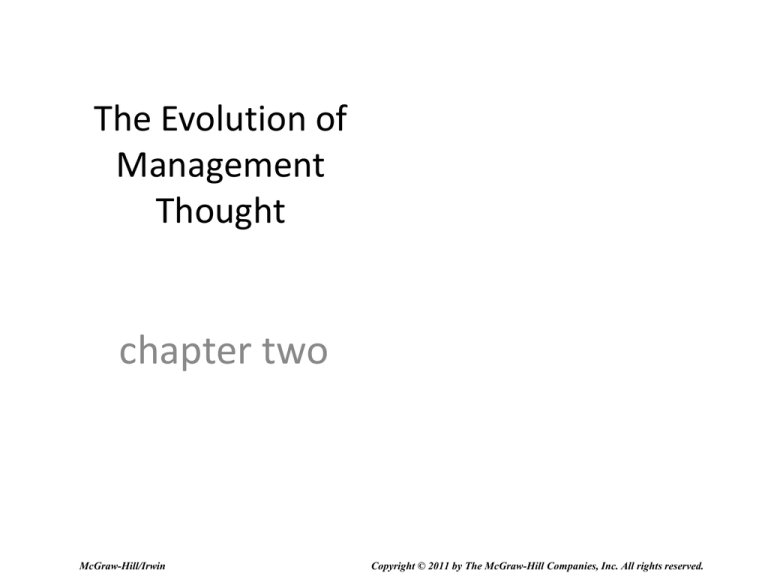
The Evolution of
Management
Thought
chapter two
McGraw-Hill/Irwin
Copyright © 2011 by The McGraw-Hill Companies, Inc. All rights reserved.
Learning Objectives
1. Describe how the need to increase organizational
efficiency and effectiveness has guided the
evolution of management theory
2. Explain the principle of job specialization and
division of labor, and tell why the study of persontask relationships is central to the pursuit of
increased efficiency
3. Identify the principles of administration and
organization that underlie effective organizations
2-2
Learning Objectives
4. Trace the change in theories about how managers
should behave to motivate and control employees
5. Explain the contributions of management science to
the efficient use of organizational resources
6. Explain why the study of the external environment
and its impact on an organization has become a
central issue in management thought
2-3
The Evolution of Management Theory
Figure 2.1
2-4
Job Specialization and
the Division of Labor
• Adam Smith (18th century economist)
– Observed that firms manufactured pins in one of
two different ways:
• - Craft-style—each worker did all steps.
• - Production—each worker specialized in one step.
• Smith found that the performance of the factories in
which workers specialized in only one or a few tasks
was much greater than the performance of the
factory in which each worker performed all pinmaking tasks
2-5
Job Specialization and
the Division of Labor
• Job Specialization
– process by which a division of labor occurs as
different workers specialize in specific tasks over
time
2-6
F.W. Taylor and Scientific Management
• Scientific Management
– The systematic study of the relationships between
people and tasks for the purpose of redesigning
the work process to increase efficiency.
2-7
Problems with Scientific Management
• Managers frequently
• Specialized jobs became
implemented only the
very boring, dull.
increased output side of
– Workers ended up
distrusting the Scientific
Taylor’s plan.
Management method.
– Workers did not share in
the increased output.
2-8
The Gilbreths
1. Analyze every individual action necessary to
perform a particular task and break it into each of
its component actions
2. Find better ways to perform each component action
3. Reorganize each of the component actions so that
the action as a whole could be performed more
efficiently-at less cost in time and effort
2-9
Administrative Management Theory
• Administrative
Management
– The study of how to
create an organizational
structure that leads to
high efficiency and
effectiveness.
2-10
Administrative Management Theory
• Max Weber
– Developed the principles of bureaucracy as a
formal system of organization and administration
designed to ensure efficiency and effectiveness.
2-11
Weber’s Principles of Bureaucracy
Figure 2.2
2-12
Rules, SOPs and Norms
• Rules
– formal written instructions that specify actions to be
taken under different circumstances to achieve
specific goals
• Standard Operating Procedures (SOPs)
– specific sets of written instructions about how to
perform a certain aspect of a task
• Norms
– unwritten, informal codes of conduct that prescribe
how people should act in particular situations
2-13

